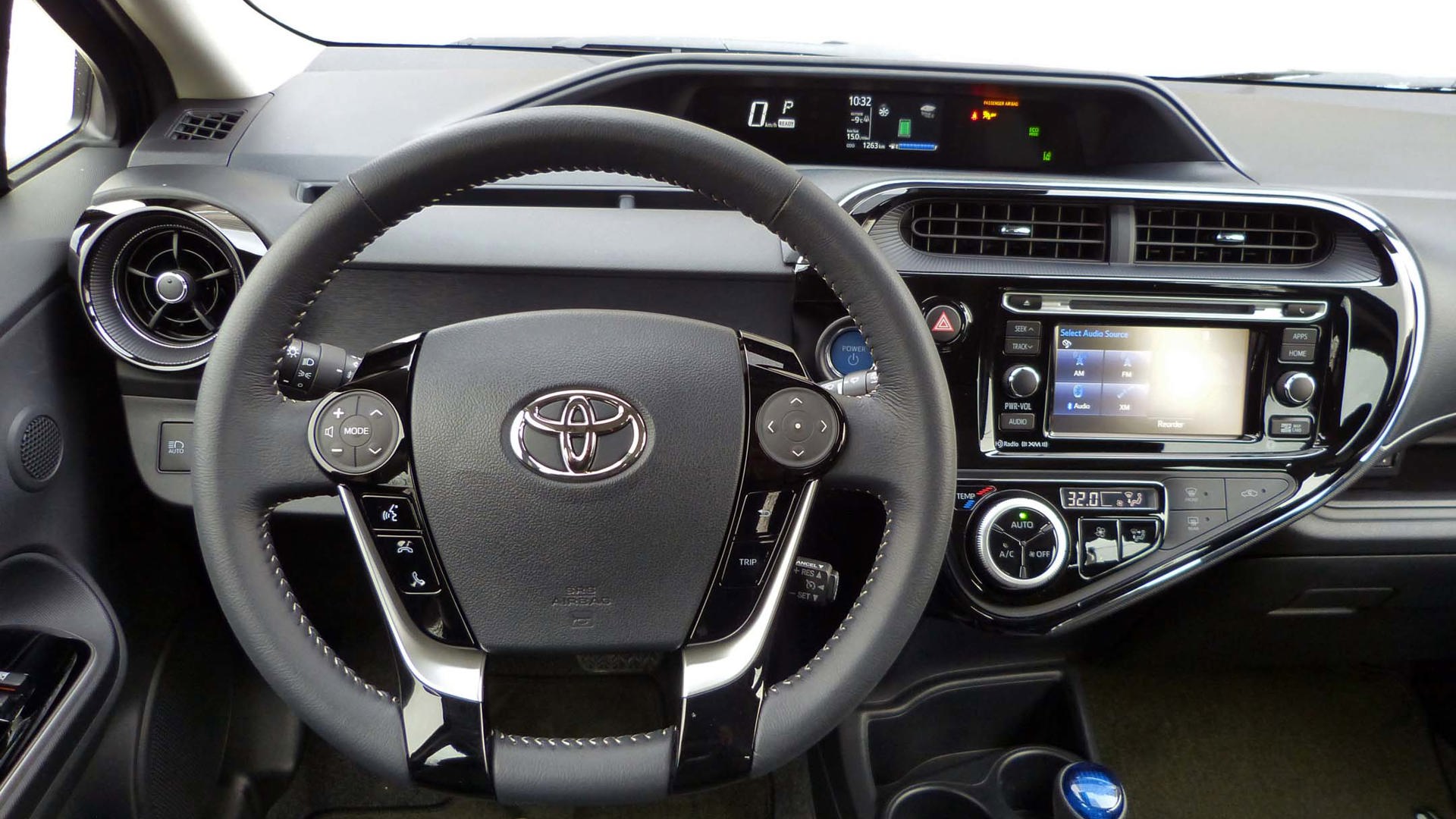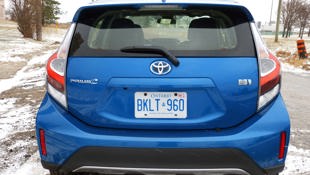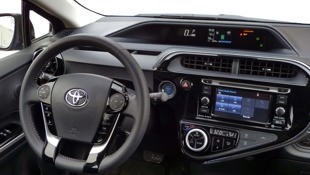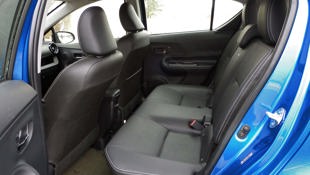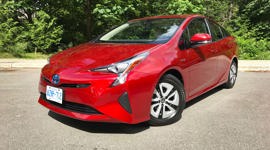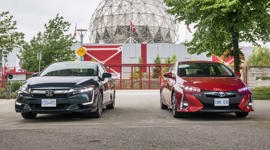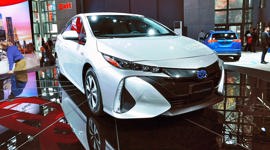 AutoTrader SCORE
AutoTrader SCORE
-
STYLING9/10
-
Safety7/10
-
PRACTICALITY7/10
-
USER-FRIENDLINESS8/10
-
FEATURES7/10
-
POWER8/10
-
COMFORT7/10
-
DRIVING FEEL8/10
-
FUEL ECONOMY8/10
-
VALUE6/10
I have an inexplicable level of affection for Toyota’s Prius c. In a world where it has been usurped by ever-more-efficient competitors, the tiny hatchback remains one of my favourite fuel-focussed rigs. Indeed, if I needed a second car for my family, it’s likely it would be high on my list. And that is the single most irrational thing I’ve ever written on this website.
“I think I can, I think I can…”
Its flaws are many – especially in the current climate, but it is just so darned adorable I forgive them all.
Even the diminutive 1.5L four cylinder with its scant 99 hp and 82 lb-ft of torque earns paternal fondness. “I think I can, I think I can” – said the little red engine. So too the little blue Prius c. The CVT transmission is a droning, aching unit that has long passed its use-by date, and one wonders if the rubber-band tranny is really the right fit for this front-wheel drive jellybean.
At 1,147 kg the 2018 Toyota Prius c Technology is light, but only about 10 percent lighter than Hyundai’s Ioniq Hybrid. That larger, heavier and more powerful car has better on-paper fuel economy at 4.2/4.0/4.1 L/100 km city/highway/combined. The Prius c comes in at a once-impressive 4.9/5.5/5.1. Real-world figures for both cars are within a whisker of their official rating, so it’s not like there’s an error of accounting here.
The Prius c also drives more like a hybrid than its new crop of competitors. The brake pedal tells you this is a hybrid at every application, binding and softening then binding again as the regen works its magic. The steering is ultra-light, and the Prius c turning circle is wider than expected. It’s nimble, but feels like the small car it is.
The inside is spartan, save for a few valiant attempts to spice it up, mostly on the steering wheel, which gets a fetching faux stitch pattern and some glossy piano-black accents. The oddball offset instrument cluster is a relic of Toyota’s foray into futurism, another eccentric piece of charm.
The vivid Prius c logos embroidered in the floor mats and the blue costume jewellery that makes up the shift knob all say, “Hey, we tried!”
Feature-wise, you get Toyota’s not-quite-right touchscreen infotainment sans Android Auto or Apple CarPlay. The “eco” button and the buttons for the heated seats (yay!) are hidden underneath the manual handbrake, which is positioned in the same spot on our models as it is in homeland Japan – to the right of the console. This is too tempting for mischievous passengers, especially during snowy months.
There is an aux cord and a USB outlet, both jammed as an afterthought into a nook above the glove compartment. Such nooks are spread throughout the cabin, which is dangerous for people like me, who throw half-empty chewing gum packs, half-used chap sticks, and never-used coins into every available orifice, never to be touched again. They are handy nooks though.
Handy too is the 484 L trunk with fold-flat seats, and a wide hatch through which to load boxes of impressive size.
The seats are actually more comfortable than you’d expect, and the uncluttered cabin feels light and breezy. It’s the equivalent of an open-plan kitchen renovation. Knee room, hip room, and airiness are undervalued in this modern era.
In sum, the Prius c is a really pleasant little rig to drive. It meshes together a host of standalone elements that by now are outclassed by more recent comers to the scene, and somehow produces a really enjoyable experience.
There are more efficient vehicles on the market, and city cars with better infotainment systems. But if you want a subcompact there aren’t actually any similar in size to the Prius c that are anywhere near as efficient. If you had enough driveway space for not-quite-two full-size cars, this is a good option when fuel efficiency is your primary concern.
The Prius c is also a pretty little car, and we can never ignore the “Toyota” badge on the front. For a significant subset of the population, those three syllables are enough to plop down their hard-earned dollars. There’s also the fact Toyota has equipped the Prius c with its Safety Sense tech, including lane-departure alert, pre-collisions brake support, and automatic high-beams. You also get stability control, traction control (as with every other car on the market), and also hill-start assist – which apparently you need in an automatic…
But even when you consider those things – as well as the onboard navigation, 15-inch alloys, and automatic climate control – this is an expensive second car. Bog standard, this Technology trim is $28,765 as tested. There’s a lot available in that price range.
The bones are very strong, but at this point in the product cycle, the competition has all caught up. I’m looking forward to the next-generation Prius c.
| Engine Displacement | 1.5L |
|---|---|
| Engine Cylinders | 4 |
| Peak Horsepower | 99 hp @ 4,800 rpm |
| Peak Torque | 82 ft-lb @ 4,000 rpm |
| Fuel Economy | 4.9/5.5/5.1 L/100 km cty/hwy/cmb |
| Cargo Space | 484 L |
| Model Tested | 2018 Toyota Prius c Technology |
| Base Price | $26,950 |
| A/C Tax | $100 |
| Destination Fee | $1,715 |
| Price as Tested | $28,765 |
|
Optional Equipment
None
|
|












